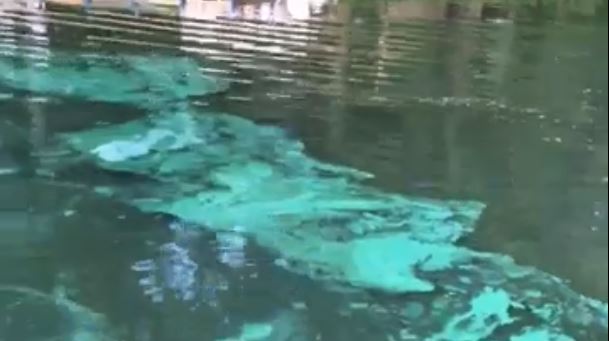Harmful algal blooms (HABs) have become increasingly common in our lake and others over the past few years. These events affect water quality, cause beach closures, and pose risks to swimming safety for people and animals. As the weather gets warmer, HABs are on our radar yet again.
Take the survey
LLPOA’s former head lifeguard Cassidy Meister is currently attending Central Michigan University to earn her environmental and biology degrees and is working on a capstone research paper about harmful algal blooms. In particular, she’d like to incorporate a case study about the presence of HABs in Loch Lomond. In order to help her gage our residents’ knowledge of HABs (and help us understand what kind of information we should be distributing to residents), please take her survey about harmful algal blooms.
Learn a bit about HABs
Blue-green algae are photosynthetic bacteria that are a natural part of the aquatic environment and are often present in Illinois lakes in small or moderate amounts. However, these organisms can grow and proliferate quickly in warm, fresh water that is rich with nutrients (like nitrogen and phosphorous), which results in an algal “bloom”. This type of bloom has been spotted in Loch Lomond before.
On the surface of the water, a HAB might look like:
- Foam
- Scum
- Mats
- Spilled paint
Some blooms are easy to spot, but others are hard to see. For example, cyanobacterial blooms are sometimes present below the water’s surface or on rocks beneath the water.
Blue-green algae can cause illness in people and especially animals. Though the LLPOA implements lake management methods to reduce the risk of algal blooms, there could be beach closings due to blue-green algae again this summer. Learn more about the health risks of HABs from the U.S. Centers for Disease Control and Prevention (CDC) at cdc.gov/HABs.
If you believe you’ve come across blue-green algae in Loch Lomond, remember the following tips:
- When in doubt, keep out
- Do not swim or fish near the algal bloom
- Send an email to LLPOAboard@lochlomondlake.comnoting the location
- Always rinse off after being in the lake
- Don’t let your dogs drink lake water or lick it off their fur
- Rinse dogs off immediately if they swim through an algal bloom

